- Umang Sagar
- Recent article, World Issue
European Migrant Crisis
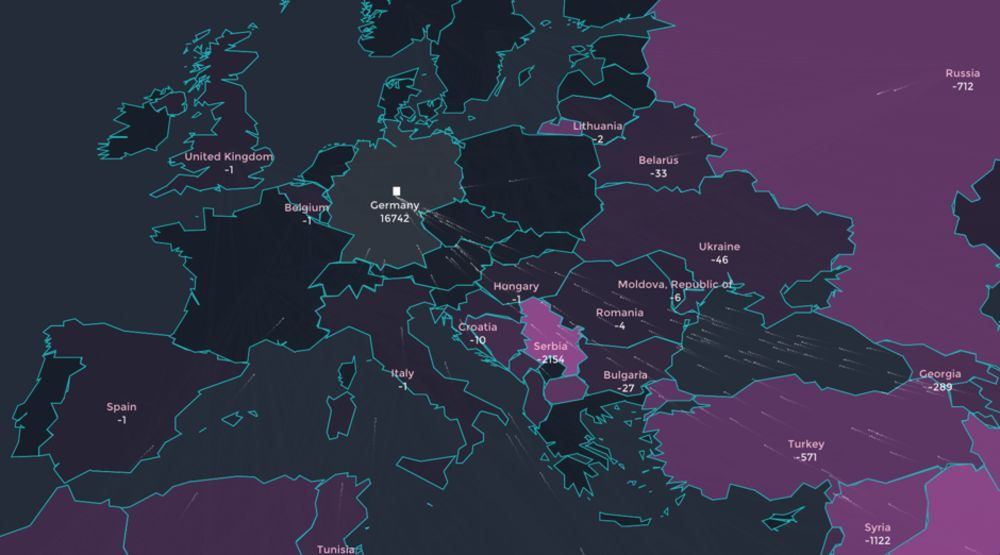
A crowded boat rolling with the waves. People crying for help. Parents are desperate to save their children’s life. Bodies washed ashore. Thousands of refugees arrive in Europe every year, and thousands more die fighting for a chance.
The dangers endured on the long overseas journeys were justified by an opportunity believed to be waiting in the European mainland. A sagging rubber raft is the safest way to escape the terrors occurring in their home country.
The courageous migrants fortunate enough to survive never would have known that the worst was yet to happen. More than a humanitarian emergency, the Refugee Crisis shifted into an integrational crisis.
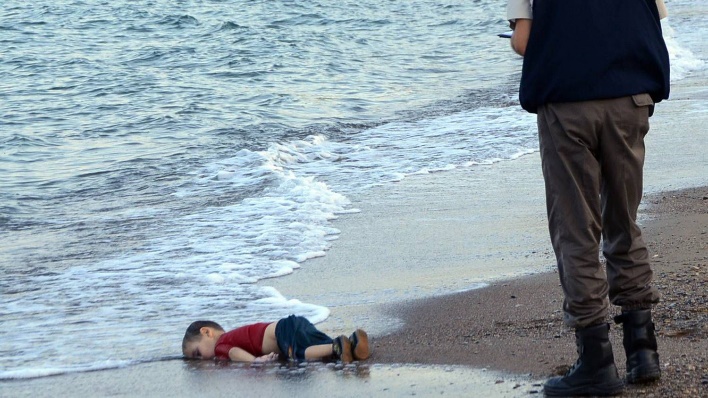
Migration is as old as human history. However, migration as a “problem” arose with the exacerbated flow of refugees arriving in the European Union from across the Mediterranean Sea or overland through Southeast Europe. In the year 2015, more than one million asylum seekers reached continental Europe, the highest number since the aftermath of World War II.
The confluence of wars and persecution are the main reasons for migrants to flee home, pursuing safety. Horrors lived in both the Syrian Civil War and the Iraq War explain the biggest surge of migration ever. The growing terrorist insurgence such as the Taliban, and the long-running human rights abuses, surpass the fear of unknown dangers when crossing borders.
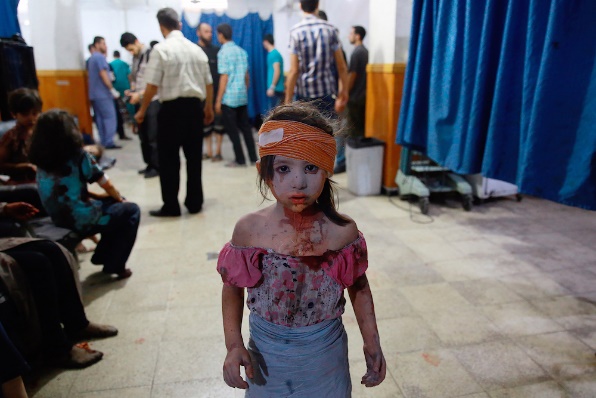
- The routes undertaken by refugees show the most common nationalities of the demographic to be Syrian (46.7%), Afghan (20.9%), and Iraqi (9.4%). Europe first appeared as the answer in 2014, after neighbor countries – Egypt, Jordan, Lebanon – stopped accepting asylum seekers, employing aggressive approaches to halt the migration flow.

Refugees would leave their belongings behind but carry with them challenging consequences.
By boat. By train. By airplane. Or even by foot. The overwhelming number of refugee traffic brought chaos, with border control services collapsing. The access-controlled crossing points inspecting migrants for their asylum applications were incapable of handling the pressure. Reception centers were running out of space, with the authorities being forced to resort to refurbished shipping containers, improvised tents, and repurposed empty buildings to house new asylum seekers.
Several nations closed their borders, and refugees would be trapped in one country or shunted to another. In particular, the Hungarian government decided to close the rail traffic to Austria and Germany, creating a massive build-up of people formed at the capital’s main train station.
The peak of the crisis was pictured in Budapest, with a scene of entire families sleeping in the streets, distressed mothers without food for their children, malnourished children in a continuous cry, facing the frigid cold of the Balkan country. Hungary had proved to adopt an unwelcoming stance towards refugees. More than 150.000 newcomers were housed in makeshift camps, by when testimonies started to surge regarding the squalid conditions and the police brutality occurring in those sites.
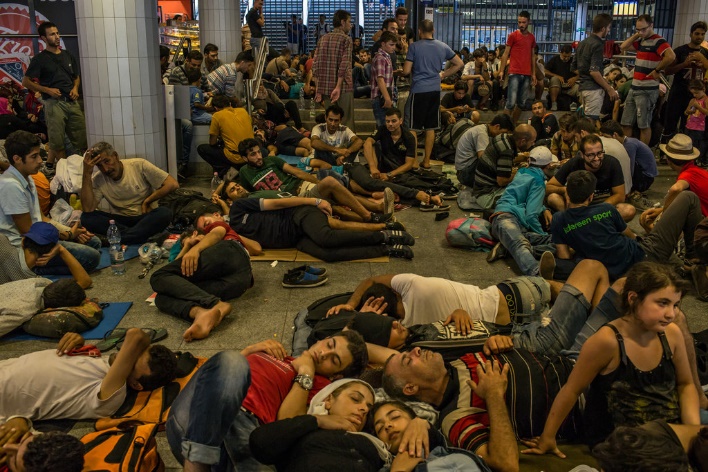
Nevertheless, returning to their countries would be even more dreadful. Once other European countries tightened their policies and borders, refugees were shunted back home to torture, slavery, and detention.
The same aggressive approach to halt migration was adopted by Italy, in 2017. The Italian government suspended rescue operations of refugees from North Africa risking their lives across the Mediterranean. Italy supported the Libyan coast guard, returning migrants to that war-torn country, to inhumane conditions in multiple migrant detention centers, bringing death and terror.
The routes crisscrossing Africa and the Middle East hide criminal networks. Migrants pay for advice, logistical help, and transportation. Eager for desperate money, smugglers appear with fake passports and airplane tickets, or with poorly maintained boats refusing to provide life jackets. The unscrupulous contrabandists cause many deaths when transporting asylum seekers along with imprisonments, exploiting refugees to deliver drugs and weapons to Europe.
Illegal crossings, also named “irregular”, were widely disseminated amongst the media. Depicted images of refugees delivering shoulder-fired missiles to Syrian fighters and assaulting females; against pictures of pregnant women seeking a chance, an opportunity of life for their children, while in the background a mother holds the body of her deceased son. The stories broadcasted polarized extreme views – a “Cultural Civil War” was about to take place.
Anti-immigration protests started to emerge around Europe after suspected terrorist incidents being perpetrated by refugees. In November 2015, 130 died in a series of crimes – suicide bombs detonated at a football stadium, radicals fired on crowded cafés, 1500 victims were taken hostage at a concert hall. Islamic State sympathizers celebrated the terror attacks in asylum centers, supporting violence.
Furthermore, multiple victims were violently assaulted and sexually harassed. Crimes with terrorism links materialized the public debate on asylum policy and the need for counterterrorism measures. Being a refugee meant being a terrorist.
During the same critical year – 2015 – Third Reich memorabilia arose in the streets, accompanied by explosives, knives, guns. An attack towards a refugee center was organized by neo-Nazis to establish fear and terror, having been prevented by German police.
Concurrently, Croatian police sexually abusing and torturing refugees was reported by victims and documented by video. The government denied such allegations, and the European Commission was later implicated in covering up the crimes.

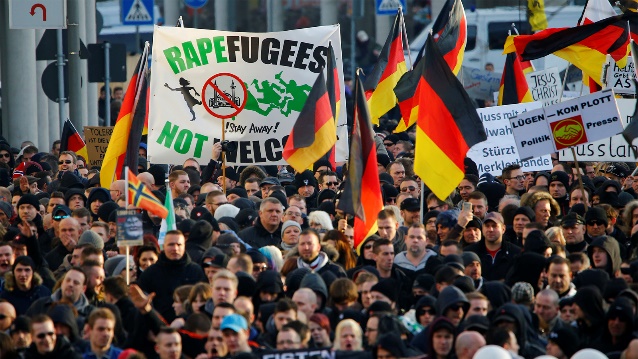
Anti-immigration protests with Nazi presence- 13angle.com
European terrorism and denial continued throughout 2016. In Greece, refugees were living under extremely poor conditions, an attempt against humanitarian rights. The camps were deluged in snow, migrants survived without electricity and heating devices. The lives of hundreds of refugees were in danger, under the deficiency of water supply, medical care, and security protection. A serious health deterioration spread amid refugees in the cold months of Greek winter.
All around, the conditions inside European provisional camps proved to be a violation of human rights, after a series of inspections were completed. Newcomers received insufficient medical attention, hardly surviving the unprotected camps.
The trust amongst the residents and the officers was inexistent, accompanying episodes of forced strip searches at the hands of the police, and further detention. Repeatedly, refugees suffered xenophobic attacks and fascist violence, and children were subjected to sexual abuse, trafficking, and drug use.
The crimes against migrants increased the number of deaths, with refugees also committing suicide.
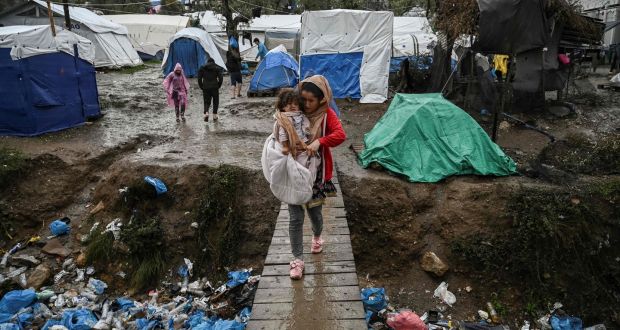
The grim circumstances suffered by refugees have an extreme effect on their mental, physical, and social health, even jeopardizing the future of children.
Recent studies show the refugee demographic to have high rates of post-traumatic stress disorders (PTSD). Fleeing violence in their home countries and experiencing further terrors, migrants suffer from poor mental health with no access to non-acute medical care, including therapy. Anxiety and depression also grew considerably since the asylum claim processing times were long. During such periods the applicants contemplate being shunted back, and are forbidden to travel and work.
Over and above humanitarian rights, there is a lack of access to legal services. Aside from safety and health, newcomers need legal help. Asylum seekers experience misinformation and difficulty in accessing information, which drives registering for applications more difficult or even avoided.
The average rate of asylum recognition stands at 4,5% on a first instance, and 18% on appeal. Migrants granted legal representation for dissemination of information were unlikely to miss vital opportunities. Free legal aid signifies a vivid future.
At a first glimpse, the Refugee Crisis reflects the defence of basic humanitarian needs such as food and shelter. Furthermore, it is an integrational crisis – starts and ends with the lack of protection against discrimination.
Resettlement implies, for the dreamer refugee, the opportunity to start a new life. However, integrating a western society is proved to be as difficult as remaining in the refugee camps. As asylum seekers, newcomers cannot acquire citizenship and participate in decision-making. During the registration period, their residence status is not secured, migrants lived every day in terror of returning to terror.
The migrant demographic was under the scrutiny of a system that places them all in the same category: unskilled laborers. Many had professional careers back home as highly skilled workers but were made redundant in the Western labor world. The refugees are disproportionally unemployed compared to the local population, and their market mobility is restricted.
Many large global economies are experiencing labour shortages, and a rise of their senior population – includes funding pensions, healthcare, and social security. Governments fail to understand the advantages of refugees in creating a more flexible labour market.
Language also represents an enormous obstacle since the majority of refugees do not have prior formal education. Consequently, accessing education which provides opportunities is especially difficult and unequal. Work and communication represent the two most powerful barriers to societal cohesion and full social, economic, and political integration.
The deficiency of a systemic approach would lead to institutionalized poverty, the creation of parallel societies, and increased deportation.
The culture gap between a community and their host country is inevitable, however, integration policies can facilitate the participation of migrants in the new community. It is supposed that, on average, a newcomer requires 20 years to fully “belong” – participate in the public discourse – to the host society. Public-private partnerships alongside NGOs represent an important facilitator of inclusion, a human right.
The various support systems and organizations supply humanitarian and cash assistance, aiding migrants on the border. More than material goods, such organisations engage with refugees’ communities to enhance their participation and including their voice in the response. Furthermore, local governments help the migrant to participate actively in society.
On arrival, non-governmental organisations provide provision of accommodation and improve the housing conditions. They identify and support refugees with specific needs, in addition to separated and unaccompanied children.
Regarding the future, various organisations support an educational network for young migrants. A great path towards justice focuses on the growth and well-being of the child. Other social enterprises provide advice for refugees to find placements depending on their qualifications, extending the newcomer’s civic and economic contribution. Refugees arrive with a great diversity of skills and experience, able to contribute to the EU workforce.
The view of migrants ought to include the positives of economic efficiency. Furthermore, multiculturalism adds value to society. The host country grows more understanding of, and respects, cultural differences. Diversity is celebrated in inclusive communities.
Migration as a “problem” constitutes an ongoing crisis, which will not disappear until global inequality is eliminated. Refugee arrivals will endure whilst the only way to escape a dire situation is to flee home.
Parents will continue to trust and put their children on a boat since the water is safer than the land.
To be named a refugee should be a symbol of strength and courage.
Top 13 Interesting Facts
Being an asylum seeker means the person is looking to be recognized as a refugee, not having received formal status.
How many refugees are there? 82.4 million individuals have been forced to flee their homes. That value means 1 in 95 people is displaced, over 1% of the world’s population.
Two-thirds of refugees arrive from five countries: Syria (almost on-third), Afghanistan, South Sudan, Myanmar, and Somalia.
At the end of 2018, Turkey was the country hosting the greater number of refugees – almost 3.7 million.
Syrians make up the largest refugee population worldwide – 6 in 10 Syrians are displaced from their homes. Starting in 2011, the Syrian Civil War forced half of the country (an estimated 12 million people) to flee.
The number of refugees arriving in Europe has decreased substantially. Between 2015 (1.032.408 people) and 2018 (141.472), there was an 86% decrease in arrivals.
New displacements rates remain very high: one person every 4 seconds which equals 16 people forced to flee their homes every minute. Per day is 23,800 individuals.
In 2019, 1,885 asylum seekers lost their lives while trying to cross the Mediterranean.
In 2020, on average 6 people died every day attempting to reach Europe through the Mediterranean Sea.
Between 2018 and 2020, almost 1 million children were born as refugees.
Children and youth under the age of 18 represent half of the refugee population worldwide, with more than 110.000 separated from their families.
It is not a crime to seek asylum, even if the migrant entered the country in irregular ways – enshrined in the 1951 Refugee Convention treaty.
Under international law, refugees cannot be forced to return to the countries they have fled from.



